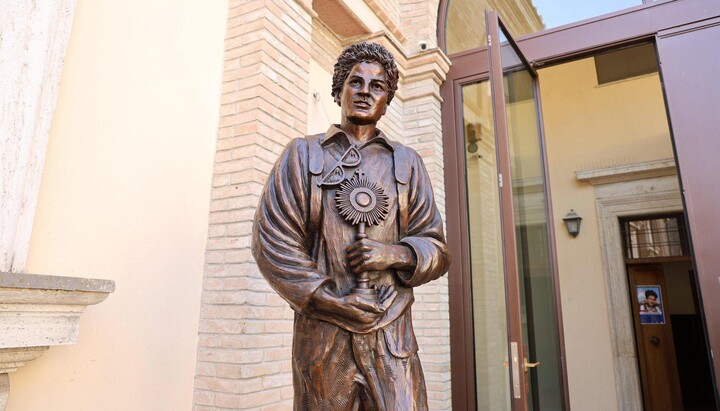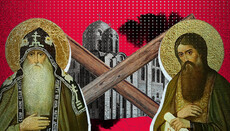Venerating the saints: from the catacombs to a “God’s influencer”

The recent canonization of the 15-year-old “patron of the Internet,” Carlo Acutis, is a good occasion to recall the history of saint-veneration in the Church.
On September 7, 2025, the pope canonized Carlo Acutis, a teenager who died of leukemia in 2006 at the age of 15. Even before his canonization Carlo had become quite popular in the Catholic Church. He was called the “patron of the Internet” and “God’s influencer,” and more than 80,000 faithful gathered in St. Peter’s Square in the Vatican for the canonization.
His biography says that from age seven he received Communion daily, went to Confession frequently, and created a website where he preached the Gospel and compiled information about “Eucharistic miracles” around the world. At 15 he was diagnosed with leukemia. The disease progressed rapidly, and he died two months later. According to his life story, he called the Eucharist “my highway to heaven,” and he offered the sufferings of his illness for the pope and the Church. He is buried in Assisi, Italy.
Almost immediately after his death, his mother began insisting that he was a saint. Her efforts met with success, and just six years later, in 2012, the Archdiocese of Milan opened his cause for beatification. In 2020 his body was exhumed and, with the help of silicone and other techniques, given an incorrupt appearance. Pilgrims began streaming to Assisi – more than one million to date. In 2024 a second miracle was approved for Carlo Acutis, thereby fulfilling all the requirements for canonization.
This whole story raises many questions. How natural is it? What weighs more in it – commerce or sincere veneration? We will not try to answer these here. But the story is a good reason to reflect on what true veneration of the saints should be in the Church, and to trace its history.
The earliest forms of veneration (1st–3rd c.)
Probably the first surviving mention of venerating saints is found in the Letter to the Corinthians by the holy martyr Clement of Rome (late 1st c.). Martyrs appeared in the Church from the very beginning of her existence, and their commemoration arose at once.
The Martyrdom of Polycarp (mid-2nd c.) notes that Christians would gather at the tombs of martyrs and observe their feast days:
“We worship Him [Christ] as the Son of God; but the martyrs, as disciples and imitators of the Lord, we rightly love.”
Already in this text one feels the need to stress the distinction between venerating a martyr and worshiping God.
Archaeological sources from this period attest to the faithful addressing the martyrs. The inscriptions are quite simple – the martyr is asked to “remember,” likely in the sense of “pray.” Thus in the Catacombs of St. Callixtus in Rome (2nd–3rd c.) there is an inscription: “PETRE ET PAULE, MEMENTOTE MARCELLI” (“Peter and Paul, remember Marcellus”).
In this period we can speak only of the veneration of martyrs. Even the term “saints” had a different meaning – it referred to Christians in general (see Acts 9:32).
There was no official canonization, and the remembrance of martyrs served as an occasion for fervent prayer to God, not to the martyr himself. On the day of their repose the faithful gathered at the graves to celebrate the Eucharist.
The spread of the practice (4th c.)
In the 4th century Christianity became the state religion of the Roman Empire. Masses of yesterday’s pagans joined the Church. Veneration of the martyrs became widespread. Beyond martyrs, other ranks of saints emerged: monastics, hierarchs, and so on.
From this time date numerous inscriptions addressed to saints. Most are requests for prayer, for example: “SANCTA AGNES, ORA PRO NOBIS” (“Saint Agnes, pray for us”). But other formulas begin to appear: “SANCTE LAURENTI, ADIUVA SERVUM TUUM” (“Saint Lawrence, help your servant”). Here the request is directed to the saint to act directly, not merely to intercede before God.
The Fathers of the time noticed this shift and began to explain that worship and petitions belong to God, while the saints are our intercessors.
St. John Chrysostom says: “We honor the martyr, but we worship the Lord.” St. Basil the Great writes: “Let the martyrs be our advocates before God.”
Debate, abuses, and theological clarification (5th–9th c.)
By the 5th century we meet sharp polemics. The priest Vigilantius of Barcelona spoke out against the veneration of saints and their relics, calling it a return to paganism. Blessed Jerome replied to him harshly. The very existence of such polemics shows that pagan-style saint-veneration was indeed a problem.
Hagiographic literature of the 5th century shows that in popular consciousness saints were increasingly seen as independent agents – appearing to people, saving cities, healing the sick. A multitude of dubious “saints” arose whose cults rested on folk legends. This prompted a response from church authorities: a formalized process of canonization began. Thus, in 401 the Council of Carthage decreed that no one may be venerated as a saint without the permission of the local bishop.
An “age of relics” also dawned. The discovery and translation of remains became the central moment of glorification. But this practice spawned widespread abuses – forgeries, the dividing of relics, and trade.
In the 8th century St. John of Damascus systematized the defense of icons and the veneration of saints, which became foundational for the Eastern tradition. He clearly distinguished “venerative worship” (timētikē proskynēsis), which we offer to saints, from “latreutic worship” (latreia), which belongs to God alone. The Seventh Ecumenical Council in 787 confirmed the same teaching.
The Middle Ages (9th–15th c.)
Unfortunately, after the Council the cult of saints in a distorted, quasi-pagan understanding became widespread. Relics brought not so much spiritual impetus as economic and political capital.
Cities and monasteries strove to acquire relics to prove their importance, attract pilgrims, and increase revenues. This spawned a whole stratum of abuses – forgeries, the fragmentation of relics, commercial trade, and semi-magical uses of relics.
The Church’s response was two-fold: on the one hand, attempts to root out abuses (councils restricted trade; theologians such as Thomas Aquinas denounced simony); on the other hand, efforts to order the veneration (official calendars appeared, and the canonization process was formalized).
To be continued











